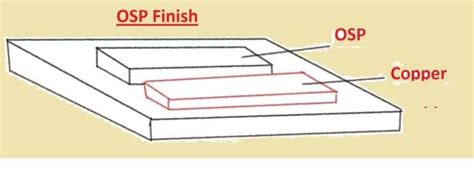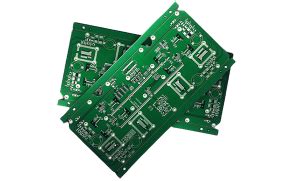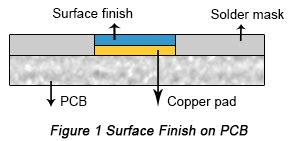Introduction to PCB Surface Finishes
When designing and manufacturing a printed circuit board (PCB), one of the crucial aspects to consider is the surface finish. The PCB surface finish not only protects the copper traces from oxidation and corrosion but also ensures reliable solderability and enhances the overall appearance of the board. With various surface finish options available, it can be challenging to determine the most suitable one for your specific PCB project. In this article, we will explore the different types of PCB surface finishes, their characteristics, advantages, and disadvantages, helping you make an informed decision for your next PCB project.
The Importance of Choosing the Right PCB Surface Finish
Protection against Oxidation and Corrosion
One of the primary functions of a PCB surface finish is to protect the exposed copper traces from oxidation and corrosion. Copper, being a highly reactive metal, readily oxidizes when exposed to air and moisture, leading to the formation of a non-conductive oxide layer. This oxide layer can hinder the solderability of the PCB and cause reliability issues. By applying a suitable surface finish, the copper traces are shielded from the environment, ensuring their long-term integrity and functionality.
Enhancing Solderability
A PCB surface finish plays a crucial role in ensuring reliable solderability during the assembly process. The surface finish acts as a barrier between the copper traces and the solder, preventing the formation of unwanted intermetallic compounds that can weaken the solder joint. Different surface finishes have varying levels of solderability, and choosing the right one depends on factors such as the soldering method, component types, and environmental conditions.
Improving Aesthetics
In addition to its functional benefits, a PCB surface finish can also enhance the visual appeal of the board. Some surface finishes, such as immersion silver and immersion gold, provide a bright and attractive appearance, making the PCB look more professional and high-quality. This can be particularly important for consumer electronics or products where aesthetics are a key consideration.

Types of PCB Surface Finishes
There are several commonly used PCB surface finishes, each with its own unique properties and advantages. Let’s explore some of the most popular options:
1. Hot Air Solder Leveling (HASL)
HASL is one of the most widely used PCB surface finishes due to its cost-effectiveness and excellent solderability. In this process, the PCB is dipped into a molten solder bath, and then hot air is used to blow off the excess solder, leaving a thin, uniform layer on the copper traces. HASL provides good protection against oxidation and offers reliable solderability.
Advantages:
– Cost-effective
– Excellent solderability
– Good shelf life
– Suitable for both through-hole and surface-mount components
Disadvantages:
– Uneven surface due to the nature of the process
– Not suitable for fine-pitch components
– Potential Thermal Shock to the PCB during the process
2. Immersion Silver (IAg)
Immersion silver is a popular choice for PCBs that require a flat, solderable surface finish. In this process, the copper traces are immersed in a silver solution, resulting in a thin, uniform layer of silver deposited on the surface. Immersion silver offers excellent solderability and conductivity, making it suitable for high-frequency applications.
Advantages:
– Flat and uniform surface
– Excellent solderability
– Good electrical conductivity
– Suitable for fine-pitch components
– Aesthetically pleasing appearance
Disadvantages:
– Limited shelf life due to silver’s susceptibility to tarnishing
– Higher cost compared to HASL
– Not suitable for environments with high sulfur content
3. Immersion Tin (ISn)
Immersion tin is another popular surface finish that provides good solderability and protection against oxidation. In this process, the copper traces are immersed in a tin solution, resulting in a thin, uniform layer of tin deposited on the surface. Immersion tin offers a longer shelf life compared to immersion silver and is suitable for both through-hole and surface-mount components.
Advantages:
– Good solderability
– Longer shelf life compared to immersion silver
– Suitable for both through-hole and surface-mount components
– Cost-effective compared to other surface finishes
Disadvantages:
– Potential for tin whiskers, which can cause short circuits
– Not suitable for high-temperature applications
– May require additional processing steps to prevent tin whisker growth
4. Electroless Nickel Immersion Gold (ENIG)
ENIG is a high-end surface finish that consists of a layer of electroless nickel followed by a thin layer of immersion gold. The nickel layer provides excellent corrosion resistance and acts as a barrier between the copper and the gold, while the gold layer ensures good solderability and protection against oxidation. ENIG is suitable for high-reliability applications and fine-pitch components.
Advantages:
– Excellent corrosion resistance
– Good solderability
– Suitable for fine-pitch components
– Long shelf life
– Aesthetically pleasing appearance
Disadvantages:
– Higher cost compared to other surface finishes
– Potential for black pad syndrome, which can cause solder joint failures
– Requires strict process control to ensure consistent quality
5. Organic Solderability Preservative (OSP)
OSP is a cost-effective and environmentally friendly surface finish that provides temporary protection against oxidation. In this process, an organic compound is applied to the copper traces, forming a thin, transparent layer that prevents oxidation. OSP offers good solderability and is suitable for quick-turn PCB projects.
Advantages:
– Cost-effective
– Environmentally friendly
– Good solderability
– Suitable for quick-turn PCB projects
– Flat and uniform surface
Disadvantages:
– Limited shelf life
– Not suitable for high-temperature applications
– May require additional cleaning steps before soldering

Comparing PCB Surface Finishes
To help you make an informed decision, let’s compare the different PCB surface finishes based on key characteristics:
| Surface Finish | Solderability | Shelf Life | Flatness | Cost | Suitability for Fine-Pitch |
|---|---|---|---|---|---|
| HASL | Excellent | Good | Poor | Low | Poor |
| Immersion Silver | Excellent | Limited | Excellent | Moderate | Excellent |
| Immersion Tin | Good | Good | Good | Moderate | Good |
| ENIG | Good | Excellent | Excellent | High | Excellent |
| OSP | Good | Limited | Excellent | Low | Good |

Factors to Consider When Choosing a PCB Surface Finish
When selecting the most suitable PCB surface finish for your project, consider the following factors:
1. Application Requirements
The intended application of your PCB plays a significant role in determining the appropriate surface finish. For example, if your PCB will be exposed to harsh environmental conditions or requires high reliability, ENIG might be the best choice. On the other hand, if you have a quick-turn prototype or a cost-sensitive project, OSP or HASL could be more suitable.
2. Component Types and Pitch
The types of components used on your PCB and their pitch (spacing between leads) can influence the choice of surface finish. For fine-pitch components and high-density designs, surface finishes like immersion silver or ENIG are preferred due to their excellent flatness and solderability.
3. Soldering Method
The soldering method used during the assembly process can also impact the selection of surface finish. For example, if you are using Wave Soldering, HASL or immersion tin might be more suitable, while for reflow soldering, ENIG or immersion silver could be better choices.
4. Cost Considerations
The cost of the surface finish is another important factor to consider, especially for large-volume production or cost-sensitive projects. HASL and OSP are generally the most cost-effective options, while ENIG tends to be the most expensive. It’s essential to find a balance between cost and the required performance characteristics.
5. Shelf Life and Storage Conditions
The shelf life of the PCB and the storage conditions should also be taken into account when choosing a surface finish. Some surface finishes, like immersion silver and OSP, have limited shelf life and may require special storage conditions to prevent degradation. If your PCBs need to be stored for an extended period before assembly, surface finishes with longer shelf life, such as ENIG or immersion tin, might be more appropriate.
FAQs
-
Q: What is the most cost-effective PCB surface finish?
A: The most cost-effective PCB surface finishes are typically HASL (Hot Air Solder Leveling) and OSP (Organic Solderability Preservative). These options offer good solderability and protection against oxidation at a lower cost compared to other surface finishes. -
Q: Which PCB surface finish is best for high-reliability applications?
A: For high-reliability applications, ENIG (Electroless Nickel Immersion Gold) is often the preferred choice. The combination of electroless nickel and immersion gold provides excellent corrosion resistance, good solderability, and long shelf life, making it suitable for demanding environments and critical applications. -
Q: Can I use immersion silver for PCBs with fine-pitch components?
A: Yes, immersion silver is an excellent choice for PCBs with fine-pitch components. The flat and uniform surface provided by immersion silver ensures reliable solderability and accommodates the tight spacing between the leads of fine-pitch components. -
Q: What is the shelf life of PCBs with OSP surface finish?
A: The shelf life of PCBs with OSP surface finish is relatively limited compared to other options. Typically, OSP-coated PCBs have a shelf life of 3 to 12 months, depending on the specific OSP formulation and storage conditions. It’s essential to assemble OSP-coated PCBs within the recommended timeframe to ensure optimal solderability. -
Q: How do I choose between HASL and ENIG for my PCB project?
A: The choice between HASL and ENIG depends on your project requirements. If cost is a primary concern and you don’t require a highly flat surface or have fine-pitch components, HASL might be the better option. However, if you need excellent corrosion resistance, a flat surface finish, and have fine-pitch components or high-reliability requirements, ENIG would be the preferred choice.
Conclusion
Selecting the right PCB surface finish is a critical decision that can impact the reliability, solderability, and overall performance of your PCB project. By understanding the characteristics, advantages, and disadvantages of each surface finish option, you can make an informed choice based on your specific requirements. Consider factors such as the intended application, component types, soldering method, cost, and shelf life when evaluating the available options.
Remember, there is no one-size-fits-all solution when it comes to PCB surface finishes. Each project has unique demands, and the best surface finish will depend on your specific needs and priorities. By carefully weighing the trade-offs and consulting with your PCB manufacturer, you can ensure that you choose the most suitable surface finish for your PCB project, optimizing its performance and reliability.

No responses yet